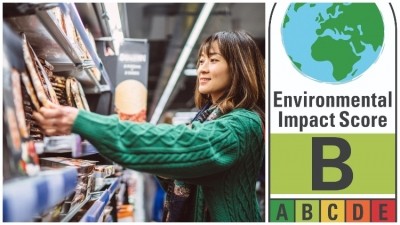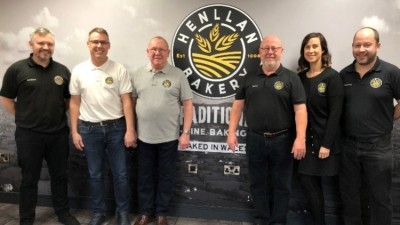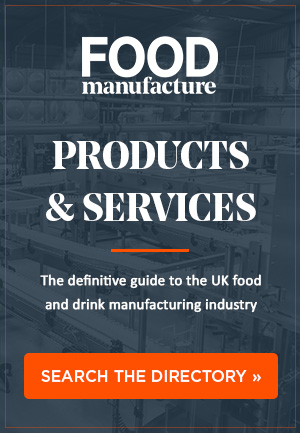Feature
Allergen management in the free-from factory
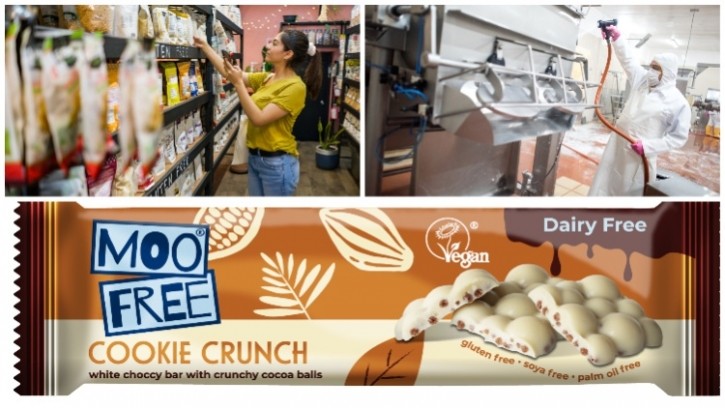
For those with allergies and intolerances, the free-from sector offers a respite from checking the backs of labels and a reassurance that the food will be safe for consumption. Whilst it takes seconds to pluck a gluten-free ready meal or dairy-free chocolate bar from the shelf, the work that goes into ensuring this food is safe is complex and multi-layered.
Speaking with food safety consultant Nic Sharman on best practice, she told Food Manufacture: “The best allergen management controls are when the zones or lines are dedicated to a specific allergen, such as gluten-free or a nut handling zone, especially when there is a free-from claim on the final packaging.
“However, factories often handle many allergens across a range of products which makes dedicated lines more of a challenge.”
There are brands which have been able to open dedicated free-from factories as they expand into this segment to help alleviate risk, but this is not always cost-effective or, indeed, plausible.
Allergen management by segregation and visuals
Allergen management should therefore be examined from a segregation perspective – for example, having dedicated equipment for one allergen.
Having visual cues for these areas is a useful approach to avoid confusion, e.g., identifying allergens with coloured labels on pallets of raw materials, and colour coding for equipment, storage and PPE (personal protective equipment).
“From decanting through to manufacturing, set a colour coding system that is used at each step: green for gluten, pink for prawns, for example. This could include coloured trays, scoops, aprons and hairnets,” suggested Sharman.
Free-from ready meal brand Kirsty’s uses colour coding within personal protective clothing (PPC), with a different colour worn for lines with allergens involved. Currently, there are two (of the 14 major UK allergens) on its site in Harrogate – sulphites and fish.
Moreover, as Sharman told Food Manufacture, the more visual the manufacturing area is made, the easier it is to see where people are moving around.
Cross contamination
Movement in the factory
People are among the most challenging areas of allergen management, so restricting movement and ensuring that staff have a clear understanding of allergens is crucial.
Alongside visual cues, Becky Ahlgren, Kirsty’s technical manager says contamination can be minimised by having everything close to the line as it will restrict movement. In other words, having dedicated equipment placed near to its specific line.
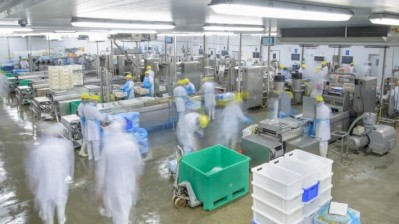
This also means, she pointed out, that if a tray is being used for a specific allergen (e.g., fish), those trays don’t go anywhere else afterwards.
“It sounds really simple, but it's that sort of thing that's really easy to overlook,” she said.
Alongside what Ahlgren described as “people mapping”, it’s also important to map the product and that involves understanding its format (e.g. liquid, powder, solid). This is because its form dictates its behaviour; liquid acts differently to solid, as it does to powder, with certain products able to sneak into crevices of machinery which others may not, for example.
Cleaning and hygiene
Hygienic design and a proper understanding of its importance is another essential part of any good allergen management system.
There are a range of critical inspection points where contamination risk is particularly high, Dr Mark Poole, CEO of cleantech start-up Ozo Innovations told Food Manufacture. For these areas, such as welds, seams, joints and gaskets, he noted that thorough visual inspection is necessary.
“Inspect for any signs of pitting, corrosion or damage that could compromise the equipment's hygiene,” he recommended.
Inspection tools include borescopes and mirrors, and access points should be well-designed to allow for easy visual examination.
There will certainly be hard-to-reach areas within your site though too and it’s important these are identified. “Examples include dead-end corners, gaps and recesses,” added Dr Poole.
While Sharman reminded that validating your cleaning processes to ensure they can remove the allergen is also another vital step. This should be verified on a regular basis based on risk, too.
The actual design of your equipment is another considered. As Dr Poole noted, look for machinery with rounded edges and seamless transitions to prevent accumulation, for components that can be accessed easily or removed to enable deep cleaning, and equipment with proper sealing and drainage systems to prevent leaks and the pooling of liquids which can lead to microbial growth.
Investing in people
When it comes to cleaning, Kirsty’s takes a unique approach. Rather than having a cleaning crew, which can sometimes be an external team who don’t spend too much (if any previous) time in the factory, it has its operations team carry out its own cleaning.
Explaining the reasoning behind this, Ahlgren said: “They run the product and then afterwards that same team will clean the line down. That helps because they've seen where the product goes – the difficult to clean areas, they know where there's potential build-up of debris.”
For Ahlgren, training in cleaning is pretty generic, so the company tries to make it as “personal as possible”.
“We’re a very small team and for us it’s about making it personal and real. So we communicate about the importance of staying free-from. For us, it’s more about communicating what staff could bring into site potentially.
“We do place a lot of importance on our line leaders and how they run and manage their lines, so we invest quite a lot of time in them.
“They’ll also spend a lot of time with the engineer understanding how to strip down the line properly. And we also have our QA who is making sure proper swabbing is carried out before each line starts up.”
Moo Free – a leading UK privately owned chocolate manufacturer which operates a completely free-from production site (none of the 14 UK major allergens) – like Kirsty’s also places a lot on emphasis on training and testing.
For the chocolate company, allergen management begins with onboarding and continues with ongoing training, extending to monitoring relevant emerging topical issues (horizon scanning) and retraining as necessary.
“Led by myself, we ensure our messaging in this area is consistent from top to bottom. We have built our business on real life experiences and the impact allergies have on people’s lives,” said Andrea Jessop, Moo Free’s CEO. “Staff onboarding happens to every new starter. No one progresses to work on the line until this is completed and signed off.
“We have made a considerable investment in this area since we started. The most important element of all being investing in an upskilled team, led by our technical director, Louise Adams, who has over 10 years’ experience in the free from category.”
Moo Free has also ensured that as its business has grown, it has continued to invest in its people, expanding the team so it maintains the appropriate level of resource and controls for safe allergen management.
Traceability and a safe supply chain
While managing people and product inside the factory is important and complicated, risk assessing external factors, such as your supply chains is perhaps even more complex.
“The biggest challenge for us is controlling the products before they enter the factory – the raw material stage,” Ahlgren told Food Manufacture.
“I work really closely with our procurement and NPD team to make sure that everything has been considered beforehand, that nothing goes into our factory unless it’s been signed off as to specification.
“It can get quite complicated because obviously when you're dealing with herbs and spices – and you’re [sometimes] reliant on agents and brokers. So it’s about making sure that there’s integrity in your supply chain – going one step back and even one step back again in that supply chain.”
To help it achieve this, Kirsty’s always works with accredited suppliers and monitors the grades closely.
“If there's any drop in a grade, then that would be reviewed,” Ahlgren added.
All the specifications are risk assessed and if any material is deemed high risk, the raw material is sent off for regular testing. The brand also does this with finished product.
If any new product is being explored at Kirsty’s, a full assessment is carried out which includes how much investment may have to go into it – for example new equipment – and what the consequences of having that commodity on site will be.
“We make sure it’s fully understood – the implications of it – before that product gets anywhere near the factory.
“NPD is really important to us, so we’re always looking at different options, but what’s equally important is risk assessment.”
Moo Free has also invested a lot into testing, with regular sampling testing carried out and a robust validation programme in place, both for its own controls and its suppliers.
“As a leading producer of dairy free chocolate, we source a lot of our core ingredients from different countries, due to the conditions required to grow them. There is currently no standardised legislation across different countries, so for example, we would test to a free from status if the results are less than 5ppm [parts per million], where in contrast, other countries could work to a different level ppm of a particular allergen,” explained Jessop.
She added: “We carry out a full programme of verification activities, such as internal auditing and routine environmental equipment swabbing. Control measures need to be validated, verified and monitored, and records maintained to support them.
“In this key area, we have access to rapid swabbing to ensure strict free from rules are adhered to and remove risk of any cross contamination or introduction of allergies to the manufacturing site. We carry out risk assessments to determine where higher risk raw materials require COAs [certification of analysis] on delivery receipt before using them in the factory.”
The chocolate company also has a positive release panel every morning – meaning it reviews all its products it has manufactured to maintain strict quality controls.
“Speed is crucial in traceability, and we have a full traceability system which is a bespoke system developed by Moo Free,” Jessop continued. “This allows a full end to end trace on all raw materials and finished goods. The system means a trace can be achieved in minutes, whereas the usual process could take hours if done manually.
Allergen management mistakes and guidance for factories
When it comes to mistakes in allergen management, the biggest ones can arguably be narrowed down to two components – failing to maintain robust controls on supply management and complacency.
“These processes might lapse through commissioning new equipment, changing in process, switching raw material suppliers and changes in personnel. It’s tough, but it’s essential to ensure these controls are maintained, for the business’s continuing success,” Jessop noted.
In summary, if you’re beginning your free-from journey or looking to enhance your current system, here are five key things to remember:
- Understand your ingredients and how they impact your site.
- Invest time and resource in developing a controlled supplier base.
- When designing or investing in equipment make sure you consider allergens from the offset.
- Use dedicated lines and equipment where possible – and make your allergen process visual.
- Do not become complacent.
While the UK laws refer to labelling requirements rather than the process for manufacturing, Sharman also pointed to Codex 2020 as a base of information around the manufacture of products.
“Codex provides a specific section on allergen management, plus details allergens in the following requirements storage, learning programmes, cleaning, incoming raw materials, labelling, transportation and HACCP principles,” she said.
“Manufacturers can also use the GFSI certification bodies and retailer requirements and guidelines which can support manufactures implement a good allergen management system.”
There are also a range of useful charity and association websites, including Anaphylaxis UK and Coeliac UK to name a few, that can help provide support to manufacturers to interpret the guidelines, alongside brief guidance available from the Food Standards Agency (FSA).



